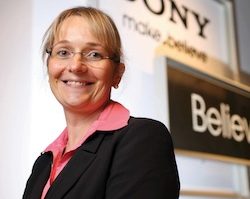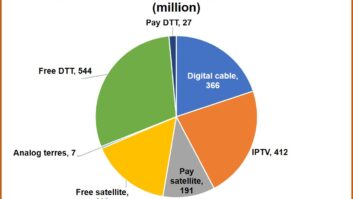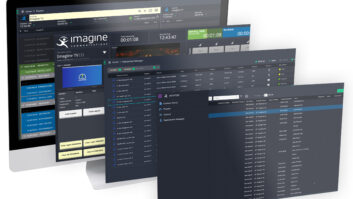
Philip Stevens talks to a production facility in Switzerland that is expanding its commitment to a tapeless environment and introducing an HD capability.
Swiss-based production facility tpc (tv productioncenter zürich ag) is expanding its tapeless capability in readiness for more high definition work from its wide customer base. In January, it started using a number of production client servers for shared storage editing and playout activities, as well as suites of edit software for HD studio and sports production.
“The company was founded in 2000 as a fully-owned subsidiary of SRG SSR idée suisse,” explains Christoph Beuggert, the facility’s technical director. “We are Switzerland’s largest audiovisual production company and offer a full range of services for television programming and other audiovisual output.”
Its centre in Zurich includes a number of studios ranging in size from 200 to 1000 square metres, and from here tpc provides facilities for SF Schweizer Fernsehen and the Swiss national Organisational Unit Business Unit Sport (BUS). Other customers include additional television channels in Switzerland and elsewhere, plus companies from the industrial, service and public administration sectors. tpc also operates OB Vans, News Production, ENG crews and video and audio postproduction suites.
To handle the move to a tapeless production scenario, tpc ordered a comprehensive Grass Valley SAN system to migrate existing production studio facilities to a file-based high definition infrastructure. The system includes a fully redundant SAN with a capacity of 300 hours at 100 Mbps HDTV, MPEG. This includes 400 Mbps FTP Transfer, eight Channels of Grass Valley K2-Summit production client servers, one Aurora Edit system and a K2-Appcenter-PRO. The system can accommodate both MPEG 50 Mbps and MPEG 100 Mbps HDTV.
The K2-AppCenter Pro is a graphical user interface (GUI) to control the K2-Server. It includes a built-in video disk recorder and player application that provides a single interface for tasks such as channel control, configuration, clip management, media transfers, channel monitoring, and system monitoring. Significantly, AppCenter can be accessed on a separate network-connected PC with Control Point software or connecting a VGA monitor, mouse, and keyboard to the K2 Summit Production Client or K2 Solo Media Server.
“We selected Grass Valley for the previously installed SD system two years ago,” states Fritz Rüdiger, the manager in charge of file-based transfer at tpc. “But before making the choice involving the recent installations, tpc again evaluated all servers on the market. Three potential suppliers were considered, but we found that K2 was still ahead and added the functionalities which were missed on the previous HD-K2, such as bi-directional channels and time code output.”
In fact, this purchase follows a similar decision by MSC (media service center) in Bern-Medienhaus (also an affiliate of SRG SSR) which also installed Grass Valley K2 servers some time ago.
“When we were looking at the choices, we felt that it was important that the concept of the system fits the needs of the users. The optimal user interface with a perfect ‘look and feel’ is a great advantage of the Grass Valley system,” maintains Rüdiger.
A number of operations will be involved with the new file-based technology, including ingest, editing, transfer and playout of video files. Of necessity, this has involved changes in a number of working practices. “As the tape-based workflows have to be changed to new file-based practices, production and editorial people have to adapt to a new -file-based thinking- in terms of handling the material. The transition certainly requires training of personnel.”
Rüdiger adds that a key element for having a workflow based on file exchange is that tpc avoided having to extend the size of the central router. “We will be archiving all tape-based material to our IBM digital archive. This started around 12 months ago, and the whole process will take about another year. A driving element is the fact that tape material is subject to degradation in spite of professional storage conditions.”
Making it easy
Jean-Jacques-Rousseau, sales manager at Grass Valley Switzerland provides some further insight into the installation at tpc. “Each system is dedicated for quick editing and playout including channel ganging during studio productions. The benefits to tpc include interoperability with other systems, for example Final Cut Pro, and file exchange using the MXF format to interface with other products such as Avid, Sony and Harris Nexio. The Aurora Edit also provides intuitive and quick editing – because everyone can use it!’
According to Rousseau, there will be significant efficiency savings for the tpc operation through this purchase. “In terms of equipment there are savings regarding the amount of routers cross points, especially in view of future extensions. It is much easier to extend a file-based distribution system by adding switches as to extend a router system by adding I/O cards, chassis, video cable and so on.”
When it comes to workflow, he explains that manpower can be redeployed. “To push or to pull the content needed, only one operator is required. Within a video transfer you need an operator on the source side, one on the receiver side and usually one operator within the central room.”
Although this is a significant move forward for tpc, it does not mean that the facility has become totally tapeless. “This is a first step in a roadmap towards a completely tapeless operation,” reveals Rüdiger. “There is some further work to do enabling and establishing interoperability between the Grass Valley system and other legacy production systems and facilities in tpc. Up to now the overall file exchange between the different systems is restricted to some technical metadata. tpc would like to add descriptive metadata to all files throughout the various operational areas: for that an improved interoperability between the various systems from different vendors is required in future.”
As mentioned earlier, one of the reasons for the expansion was to handle increased HD work. “At the moment HD production is growing rapidly using HD-capable equipment from ENG up to playout,” states Rüdiger. “It is currently at a level of around 50%, but the prospects for HD are very positive for Switzerland. It is the strategy of SRG to transmit all channels with HD signals at the beginning of 2012 and to switch off all SD-channels by the end of 2015.”







